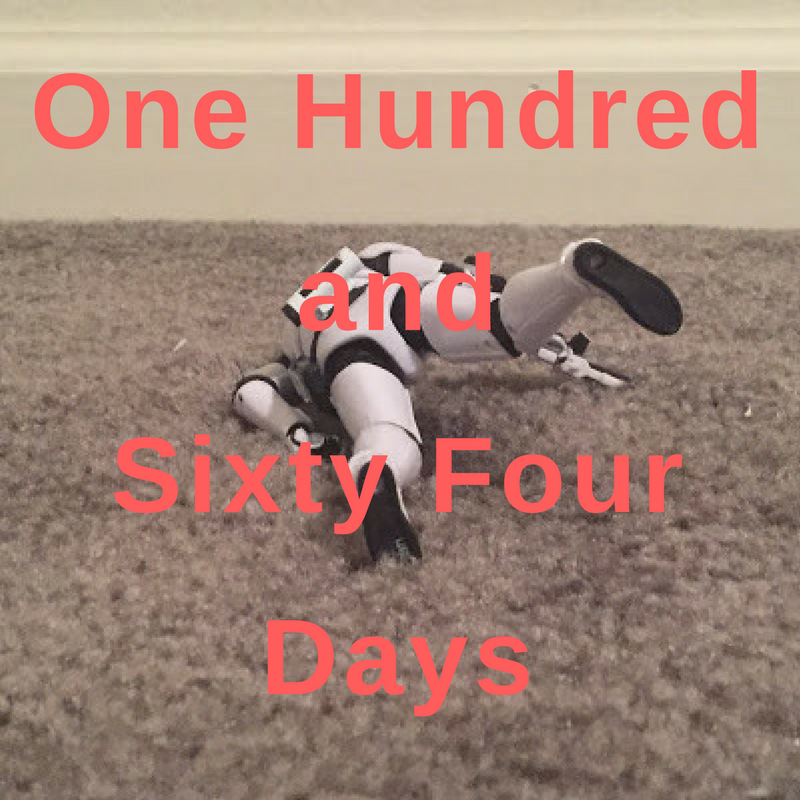Cover by Jack Kirby and George Roussos
3. The Molecule Man
The Molecule Man, created by Stan Lee and Jack Kirby, first appeared in Fantastic Four #20 in 1963. Despite his status as a prime-era Lee & Kirby creation, he spent much of the first twenty years of his existence out of the spotlight. He wouldn't fully come into his own until 1985, when Jim Shooter plucked the character out of semi-obscurity to play a surprisingly large role in the first Secret Wars - a role which would later be expanded to co-star in the sequel.
Even though by 1963 Marvel was already experiencing its first real successes, it would be an exaggeration to say that the company yet had a firm grip on its formula. A villain like the Molecule Man was the product of Lee & Kirby's trial & error period - less a full-formed world-beater like Dr. Doom or the Sub-Mariner, and more a gimmick menace along the lines of the Miracle Man or Kurrgo. Even the name, "Molecule Man" - much like "Miracle Man" - has a faintly generic ring to it. Whereas the likes of the Mad Thinker, the Mole Man, and the Red Ghost - other second-stringers introduced in the strip's first two years - continued to appear and develop throughout the 60s, the Molecule Man was one-and-done. He would not appear again for another ten years, until Steve Gerber brought him back for Marvel Two-In-One in 1974.
But at the moment of his creation, the Molecule Man was a big deal, such a big deal that Uatu the Watcher himself - in only his second appearance - drafted the Fantastic Four to defeat him.
Art by Jack Kirby and Dick Ayers
Now, it bears stressing that Lee & Kirby were (literally) making everything up as they went along. The "rules" that we take for granted simply hadn't been written yet: the Watcher was some bald guy who lived on the moon, and even though he said he couldn't interfere, that was all he really seemed to do. Things were a lot more hyperbolic back then. The FF could take on a guy capable of destroying the galaxy and call it a Tuesday without really breaking a sweat. It was a weightless statement, which added to the impression of the Molecule Man as a weightless villain. Accordingly, the Fantastic Four were able to defeat him without much fuss, simply exploiting (what he believed at the time to be) his only weakness, an inability to manipulate organic matter. (They covered themselves in clay in order to pretend to be statues, in case you were wondering.) Uatu banished him to another dimension, and that was the end of that.
There were lots of stories like this in the early days of Marvel. We remember the highlights, of course. The characters and concepts that touched a nerve would return and eventually become fixtures - those that didn't, wouldn't. But eventually, almost everything from the Lee & Kirby run returned, in one form or another - even Kurrgo and the Miracle Man. When Steve Gerber brought the Molecule Man back for the first issue of Marvel Two-In-One, no one had seen him for a decade. Given the opportunity to reintroduce the character with a relatively clean slate, Gerber instead opts to needlessly complicate matters. He kills off the Molecule Man on his first page back, but not before the character passes on the family business of trying to destroy the Fantastic Four to his son. (Where'd the son come from? Where was this world that had genetically compatible humans with whom to breed? If Uatu had the power to drain [or make him believe that he had drained] the Molecule Man's powers, why not simply send him to a universe without any oxygen and let nature take its course? Steve Gerber isn't concerned with asking these questions, so I guess we shouldn't be either.)
Art by Gil Kane and Joe Sinnott
As should come as no surprise, Molecule Man, Jr. is no match for the titanic team of The Thing and the, er, Man-Thing. But by the conclusion, Molecule Man, Jr. is dead, leaving only his wand as a memento of his passing. The wand, believed to be the source of - or at least a necessary focusing device for - his powers, banged around for a while. Rather than being simply an inanimate rod, however, the wand now actually did contain the powers and essence of the Molecule Man, and possessed everyone who came into contact with it - a succession of parties that included a little girl, a snake, an unemployed boxer, Reed Richards, and a hobo.
Enter Jim Shooter.
For whatever reason, Shooter decided that the Molecule Man wasn't living up to his potential, in more ways than one. So at the tail end of 1981, he resurrected the character - literally - for a two-part appearance in The Avengers, guest starring the Silver Surfer. The first thing Shooter did was to actually bring him back, separate from merely a disembodied mind inhabiting a magic wand.
Art by Alan Weiss and Dan Green
Living in a magic wand for a decade hasn't done much for the Molecule Man's disposition. After the Surfer tells him about where he's from and why he's on Earth, Molecule Man decides he wants to be Galactus now, and sets about eating the Earth - beginning with Western New Jersey.
The Surfer is easily overpowered by the Molecule Man, but not before he can send his board (which I refuse as a matter of principle to call "Toomie") to seek help with the Fantastic Four. They're not in town, but Iron Man just happens to see the signal, at which point he convenes the Avengers to investigate the problem. The team is no match for him, even with the Surfer on hand to help. All seems lost after the Molecule Man destroys the Avengers' weapons (Cap's shield, Iron Man's Armor, Thor's hammer, and the Surfer's board), and then destroys them, crushing them in a giant, er, crushing machine. The only Avenger left standing is . . . Tigra!
Up until this moment, Tigra had been experiencing a crisis of confidence as an Avenger. Next to the likes of Thor, Iron Man, and Captain America, she felt insecure, and had actually been suffering from bouts of anxiety over her perceived uselessness. In fairness, however, when left alone against the Molecule Man she reacts more or less the way you or I would.
With no one around to tell him what to do, the Molecule Man is the biggest creep you can imagine. (Shooter, being Shooter, even gives us a tiny bit of gay-bating just to make sure we're supposed to know how much of a loser the guy is.) But all is not lost, and the heroes have not been killed - rather, saved by the Surfer, who phased the Avengers through the bottom of the crushing machine at the last moment. (Incidentally: this story marks the first time Cap, Iron Man, and Thor's identities are revealed to each other - as, without his hammer, Thor reverted to Don Blake, and without his armor Tony was just a greasy man in a banana hammock. Weird to think that didn't happen until 1982!)
Tigra doesn't really come off very well in this story. Left alone to handle the Molecule Man herself, she loses her nerve when presented with the opportunity to kill him. But after the battle is joined, she's had enough of his shit.
Eventually, they got the drop on him for good. But before the Avengers can decide whether or not to kill him, Tigra actually does save the day.
Now, if you can put aside all of the other terribly problematic issues raised by this story, the ending is actually quite good. Tigra talks Owen (who didn't even have a name until this story, either) down from wanting to destroy the world, convincing him that maybe, just maybe, his dissatisfaction with the world stemmed from his feelings of inadequacy, and that these feelings were based on insecurities that could be helped through therapy. What a concept! Now, one would think based on this turn of events that the Avengers would hoist Tigra up on their shoulders and parade her through town, congratulating her for saving the world . . . and (more or less) nonviolently, to boot. Well, that's not exactly what happens. She decides she's not cut out to be an Avenger, and Cap, Thor, and Iron Man - in a stunning echo of their monumentally bone-headed response to Carol Danvers in Avengers #200 - let her walk away without so much as a feigned attempt to get her to stay.
The Molecule Man - now Owen Reece, with a newfound commitment to sanity, not being a misogynistic creep, and, er, not destroying the planet, disappears from the Marvel Universe for another three years. But then . . .
Art by Mike Zeck and John Beatty
The premise of the first Secret Wars, for those of you who may need a refresher (and if you do, don't worry, another will be along soon, Jim promises), was beautiful in its simplicity: the world's greatest heroes and villains were transported to the far end of the universe, to a specially constructed planet called Battleworld, in order to participate in a gladiatorial contest for the edification of a mysterious being known only as . . . THE BEYONDER!
While most of the Beyonder's (or, technically, Galactus', since Galactus was doing the Beyonder's bidding) choices were sound, there were still a couple of questions.
First among them being, in any assortment of the world's deadliest villains, why include an obscure villain who had, in his most recent appearance, been reformed? As we see, at the beginning of the series he really has no interest in being a bad guy anymore, even going so far as being unwilling to fight Ultron when Ultron loses his shit and tries to kill everyone (which, being Ultron, he does on page 9).
- he soon comes to realize that of all the assembled villains, Owen is the single most important.
Finally we've come full circle. When first he appeared the Watcher believed the Molecule Man to be a significant enough threat that not merely did he break his vow of non-interference in order to aid the Fantastic Four, but he personally intervened to banish the Molecule Man - who, importantly, believed he that had lost his powers - to another dimension. When he (sort-of) returned to Earth it took him years to get his act together, and when he did he realized that he had no real desire to fight anyone anymore. But on Battleworld, thanks to the "gift" of Doom's insight, we see that the Molecule Man was far more powerful than even he had been led to believe - in fact, he was every bit as powerful as the Watcher had initially said, back in 1963.
But ultimately, he didn't want to do anything with his power. He carried the villains - along with that chunk of Colorado - back to Earth, leaving the heroes to settle accounts with Dr. Doom and bring the first Secret War to its climax. He then settled down to a quiet, normal like with Marsha, in Denver. Far from being the angry nerd who emotionally tortured Tigra out of feelings of sexual inadequacy, he appeared positively sensitive. (Other than the whole trying to kill the heroes on Battleworld thing, which I think we can agree to chalk up to Doom's charismatic influence).
Next: The Cosmic Cube




